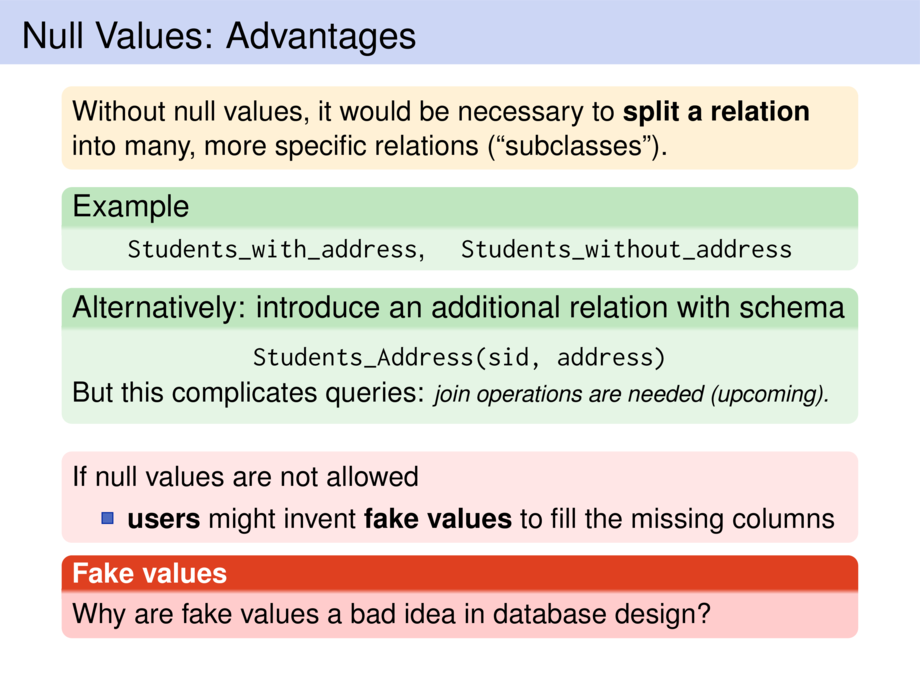



































































































28/77
\begin{frame}
\frametitle{Null Values: Advantages}
\begin{goal}{}
Without null values, it would be necessary to
\textbf{split a relation} into many, more specific relations (``subclasses'').
\end{goal}
\begin{exampleblock}{Example}
\begin{center}
\sql{Students\_with\_address}, \quad \sql{Students\_without\_address}
\end{center}
\end{exampleblock}
\begin{exampleblock}{Alternatively: introduce an additional relation with schema}
\vspace{0.5ex}
\begin{center}
\sql{Students\_Address(sid, address)}
\end{center}
\vspace{-1ex}
But this complicates queries: \remark{join operations are needed (upcoming).}
\end{exampleblock}
\medskip
\pause
\begin{alertblock}{}
If null values are not allowed
\begin{itemize}
\item \emph{users} might invent \textbf{fake values} to fill the missing columns
\end{itemize}
\end{alertblock}
\smallskip
\begin{quiz}{\textwidth}{Fake values}
Why are fake values a bad idea in database design?
\end{quiz}
\vspace{10cm}
\end{frame}

